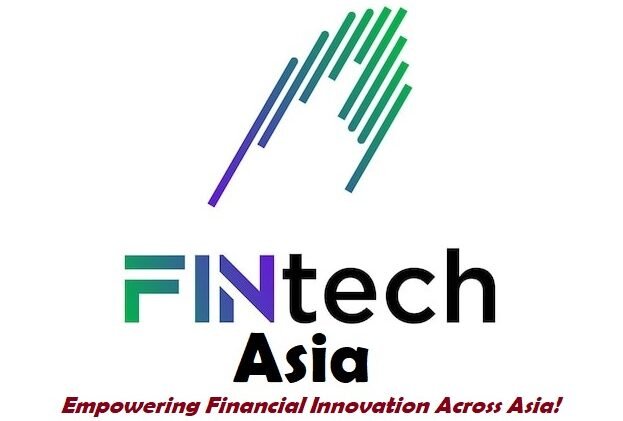Exploring FtasiaEconomy Tech Trends: Revolutionizing Global Markets
In an era where technology is rapidly transforming every sector, FtasiaEconomy has emerged as a leading trendsetter, influencing not only the Asian economy but also global financial landscapes. As businesses and governments embrace digital innovations, FtasiaEconomy is at the forefront, pioneering tech trends that are reshaping industries, improving efficiency, and driving economic growth. In this article, we’ll explore the key technological trends emerging from the FtasiaEconomy and how they are impacting the world of finance, trade, and investment.
The Rise of the FtasiaEconomy
The FtasiaEconomy refers to the technological and economic initiatives originating from Asia, specifically focusing on the financial sector. As countries in Asia, such as China, Japan, South Korea, Singapore, and India, become powerhouses in technology innovation, the ripple effect is being felt globally. The growth of fintech startups, blockchain technology, and AI-driven financial solutions has accelerated the development of a new economy based on speed, efficiency, and inclusivity.
Key Drivers of the FtasiaEconomy
Several factors have contributed to the rise of FtasiaEconomy tech trends:
- Government Support: Many Asian governments are heavily investing in digital infrastructure and technological advancements to foster innovation. Countries like Singapore and South Korea have implemented policies encouraging entrepreneurship, digital transformation, and the development of smart cities.
- Tech-Savvy Population: With a growing number of digitally literate people, especially millennials and Gen Z, there is increasing demand for innovative financial products and services. This consumer base is driving the adoption of fintech apps, digital wallets, and AI-powered platforms.
- Rapid Urbanization: Asia’s fast-growing urban centers are creating demand for seamless digital solutions in banking, e-commerce, and logistics, pushing companies to invest in advanced technologies to stay competitive.
- Global Influence: FtasiaEconomy is not restricted to Asia. Through strategic partnerships, investments, and innovations, it has created global opportunities, particularly in Africa, Latin America, and parts of Europe, where Asian tech companies are expanding their footprint.
The Biggest Tech Trends in FtasiaEconomy
The FtasiaEconomy has birthed several tech trends that are changing the way businesses operate. These trends are providing new avenues for growth, especially in finance, supply chain management, and digital commerce.
1. Blockchain and Cryptocurrency
Blockchain technology is a key driver of the FtasiaEconomy, enabling faster, more secure, and transparent financial transactions. Cryptocurrencies such as Bitcoin and Ethereum, along with region-specific tokens, are reshaping global financial systems by offering decentralized solutions for cross-border payments.
Blockchain in Supply Chains: Many Asian companies are adopting blockchain to streamline supply chain operations, ensuring transparency and efficiency. Blockchain’s ability to provide real-time data tracking has become essential for industries like manufacturing, healthcare, and logistics.
Central Bank Digital Currencies (CBDCs): Countries like China are leading the way with the development of Central Bank Digital Currencies. The digital yuan, for instance, is poised to revolutionize digital payments by providing a government-backed alternative to private cryptocurrencies.
2. Fintech Innovation
Fintech is arguably the most significant tech trend driving the FtasiaEconomy. From digital banking to mobile payment solutions, fintech innovations are simplifying financial transactions, increasing accessibility, and promoting financial inclusion.
Digital Wallets: Platforms such as WeChat Pay, Alipay, and Paytm have become indispensable tools for millions of users in Asia. These wallets are integrated into everyday life, allowing for effortless online shopping, bill payments, and money transfers.
AI-Powered Financial Services: Artificial intelligence is enhancing the efficiency of banking services. AI-driven algorithms analyze large amounts of data to offer personalized financial advice, detect fraud, and optimize investment portfolios. Robo-advisors, already popular in countries like Japan, are offering tailored wealth management services, making investments more accessible to the average consumer.
3. Artificial Intelligence and Machine Learning
Artificial Intelligence (AI) and Machine Learning (ML) are crucial to the growth of the FtasiaEconomy. AI is enabling companies to process large amounts of data, predict market trends, and make more informed decisions. From personalized marketing to intelligent customer service bots, AI has become a staple in many industries.
AI in Financial Markets: AI-driven trading platforms are capable of analyzing vast amounts of market data and making predictions that humans might overlook. This has led to the rise of algorithmic trading, which has become an integral part of stock markets in Asia, especially in financial hubs like Hong Kong and Singapore.
AI in Customer Service: Companies across Asia are using AI-powered chatbots to handle routine customer inquiries. These bots, equipped with natural language processing, can understand and respond to customers in real-time, improving user experience and reducing operational costs.
4. 5G and Internet of Things (IoT)
5G technology is revolutionizing connectivity, offering faster internet speeds and low-latency networks, enabling innovations such as autonomous vehicles, smart cities, and IoT-powered systems.
Smart Cities: The FtasiaEconomy is leading the way in the development of smart cities. Countries like China and Singapore are using 5G to power IoT networks, connecting everything from traffic systems to energy grids, making cities more efficient, sustainable, and livable.
IoT in Financial Services: IoT technology is transforming the way consumers interact with financial institutions. Wearable devices, smart ATMs, and connected POS systems are improving the convenience and security of banking services.
5. Quantum Computing
Quantum computing is an emerging tech trend that promises to revolutionize industries such as finance, cybersecurity, and pharmaceuticals. Though still in its nascent stage, the development of quantum technology in the FtasiaEconomy is set to unlock unprecedented computational power, solving complex problems that current computers cannot handle.
Quantum Financial Modeling: In the financial sector, quantum computing has the potential to transform risk management, portfolio optimization, and pricing models. Asian countries like China and Japan are heavily investing in quantum research, aiming to be pioneers in this space.
6. Green Tech and Sustainability
As environmental concerns grow, the FtasiaEconomy is also seeing a rise in green technology. Sustainable innovations are being integrated into various sectors, from energy to finance, as companies and governments recognize the importance of reducing carbon footprints.
Green Financing: With increasing pressure to meet global climate goals, many Asian countries are promoting green bonds and sustainable investments. Fintech companies are developing platforms that allow users to invest in eco-friendly initiatives, aligning financial growth with environmental goals.
Renewable Energy: Advances in technology have made renewable energy sources such as solar and wind more accessible. In the FtasiaEconomy, countries like China and India are leading in the adoption of renewable energy solutions, making significant contributions to global efforts to combat climate change.
The Impact of FtasiaEconomy Tech Trends on Global Markets
The FtasiaEconomy is not just a regional phenomenon but a global force driving innovation across industries. Its influence on global markets is undeniable, with Asian companies expanding their reach and introducing cutting-edge technologies that reshape industries worldwide.
Cross-Border Investments: The FtasiaEconomy is fueling cross-border investments, with Asian companies investing in startups and ventures across Europe, the Americas, and Africa. This flow of capital is fostering innovation and driving the development of new technologies globally.
Disruption of Traditional Banking: The rise of fintech in the FtasiaEconomy is challenging traditional banking systems, offering more agile, digital solutions. As fintech platforms continue to grow, traditional banks are being forced to adapt or risk losing market share.
Expansion of E-commerce: Asia’s dominance in e-commerce, with companies like Alibaba and Tokopedia, is being amplified by FtasiaEconomy tech trends. With innovations in payment systems, logistics, and customer engagement, these companies are expanding into international markets, creating new opportunities for global trade.
Conclusion
The FtasiaEconomy tech trends are at the cutting edge of innovation, driving transformation not only in Asia but also globally. From fintech and blockchain to AI and quantum computing, these trends are shaping the future of finance, trade, and industry. As businesses and governments continue to embrace these technologies, the FtasiaEconomy will undoubtedly remain a major player in the global economy, leading the way in technological advancements and creating new opportunities for growth and development.



